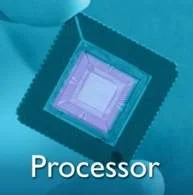Last week, ARM disclosed technical details about its new v8 architecture – the first to include a 64-bit instruction set.
The next-gen architecture is expected to significantly extend the reach of ARM processors in the lucrative server market, which is currently dominated by x86 chips.

“We have been working on 64-bit processors for about 5 years now and collaborating with partners for the past three. We are now at point where all building blocks in place,” Lance Howarth, EVP of marketing at ARM told TG Daily on the sidelines of ARM TechCon 2011 in Santa Clara, California.
“We have models that are running 64-bit operating systems along with compilers. We are currently feeding everything back to the open source community and seeding with system partners. As such, we expect to see systems based on 64-bit ARM architecture hitting the market by 2013 or 2014.”
According to Howarth, the industry has plenty of motivation to adopt ARM’s 64-bit RISC-based processors for servers, as power-hungry x86 chips drive up costs – both in terms of consumption and heat dissipation.
“Our chips are certainly very attractive for servers, because low-energy consumption cores can help businesses significantly reduce their energy use, while addressing some of the cooling challenges in a very tangible way,” he explained.
“In addition, the type of workloads that servers are running these days varies dramatically. The loads aren’t as structured as they used to be because server technology has evolved alongside the cloud. Our 64-bit chips fit this dynamic paradigm quite well and can scale accordingly – simply because it is the exact opposite of a one-size fits all mentality associated with larger monolithic CPUs.”
Ian Ferguson, Director of Server Systems and Ecosystems at ARM, expressed similar sentiments.
“Current server work loads map very well to multi-core processors. We plan on targeting different types of servers with various chips, which will offer businesses the opportunity to select a processor that fits their needs.
“Clearly, the market is no longer about petaflops or about absolute performance per core. We are concerning ourselves with how much performance you can get per watt in a power-conscious manner. Remember, we are addressing the issue from a very different perspective than Intel, simply because we have always designed cores in a power constrained environment due to our mobile heritage.”
Ferguson also confirmed that ARM would likely target the server market in stages, beginning with web servers where the company already maintains a 32-bit presence.
“This is obviously the first place we can start to impact in a very real way. Of course, 64-bit CPUs are applicable to other areas as well. Still, we are starting near the edge, near lower performance, and will scale upwards in the market by migrating to heavier workloads.
“Remember, this is only the start of our journey in the server space, and I expect ARM to gather more and more momentum with time. Although it is difficult to know for certain, we would be quite pleased with 10% server market share by 2015-2016.”






